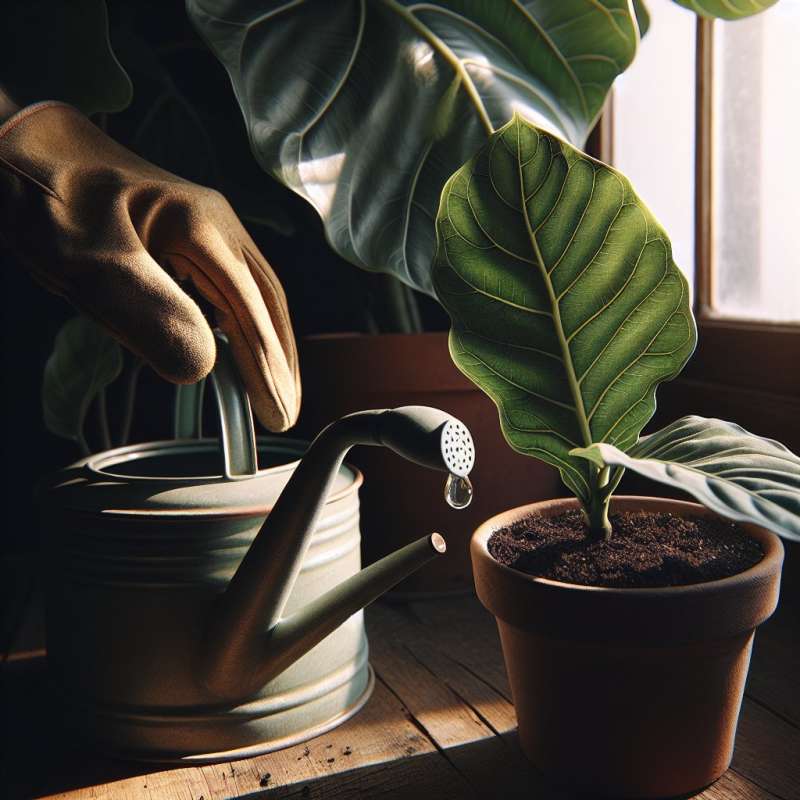
Understanding Fiddle Leafs
The Fiddle Leaf Fig, scientifically known as Ficus lyrata, hails from the African rainforest. Its violin-shaped leaves thrive in warm, wet conditions, mirroring its native habitat's climate.
Perfect Lighting Conditions
Fiddle Leaf Figs desire bright, indirect sunlight. Direct exposure can burn leaves, while too little light hampers growth. East-facing windows are ideal, providing gentle morning sunlight.
Watering Your Fiddle Leaf
Water only when the top inch of soil is dry. Over-watering leads to root rot, an often fatal condition. Under-watering causes drooping leaves. Consistency is key; fluctuations stress the plant.
Humidity and Temperature
Maintain 60-75°F and high humidity for your fig. A pebble tray or humidifier can aid in mimicking its native tropic humidity. Avoid drafts and sudden temperature changes.
Feeding Your Fig
During growing seasons, spring and summer, feed your fig with liquid fertilizer every month. In fall and winter, reduce to once every 2 months. Over-fertilizing can cause leaf drop.
Repotting and Growth
Fiddle Leaf Figs require repotting every 1-2 years to prevent root crowding. Choose a pot 2-3 inches larger in diameter. This promotes growth and refreshes nutrient availability.
Pruning and Propagation
Prune in spring to maintain shape and encourage branching. Use a sharp, clean knife. Cuttings can root in water or soil, offering a way to propagate new plants.
What is the Fiddle Leaf Fig's native climate?
Dry and arid regions
Warm, wet rainforest conditions
Cold, temperate climates
Company